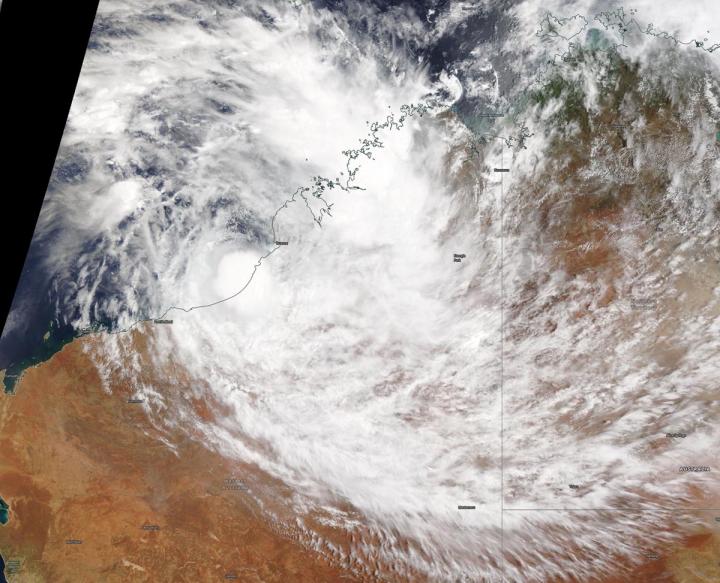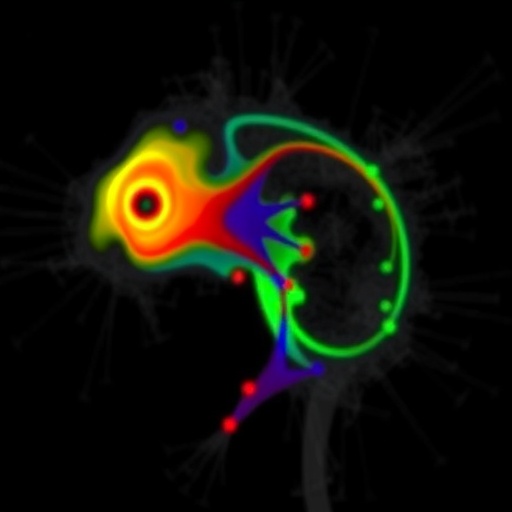
Credit: NASA Worldview, Earth Observing System Data and Information System (EOSDIS)
NASA’s Terra satellite passed over the Southern Indian Ocean on January 7 and found the center of Tropical Storm Blake just of the Kimberley coast of Western Australia.
The Australian Bureau of Meteorology or ABM noted that the Warning Zone for the storm stretches from Bidyadanga to De Grey, extending inland to Shay Gap.
On January 7, the Moderate Imaging Spectroradiometer or MODIS instrument that flies aboard NASA’s Terra satellite provided a visible image of Blake that showed a rounded center of circulation surrounded by strong thunderstorms. A rounded shape of a tropical cyclone indicates an organized storm. That center was located just off shore from Bidyadanga. Bidyadanga is also known as La Grange and has the largest Aboriginal community in Western Australia.
The MODIS image showed the extent of the southern quadrant of Blake’s clouds stretching inland into the northwestern part of Western Australia.
At 7 a.m. EST (1200 UTC/8 p.m. AWST local time), Blake had maximum sustained winds near 75 kph (47 mph). Blake is centered near latitude 19.1 degrees south and longitude 121.0 degrees east, about 85 kilometers (km) (53 miles) north northeast of Wallal Downs and 95 km (59 miles) west southwest of Bidyadanga. Blake is moving to the south.
ABM forecasters said that Blake is likely to track close to the west Kimberley coast this evening and cross the coast along Eighty Mile Beach near Wallal Downs early Wednesday morning, January 8. “There is a chance the system may take a more southwest track early Wednesday morning close to the coast. If this occurs, it may stay just far enough off the coast to intensify slightly further before making landfall later Wednesday morning between Wallal Downs and Pardoo Roadhouse,” according to ABM.
Tropical Cyclone Blake is moving south and is expected to make landfall near Wallal Downs early Wednesday morning, January 8.
NASA’s Terra satellite is one in a fleet of NASA satellites that provide data for hurricane research.
###
Tropical cyclones and hurricanes are the most powerful weather events on Earth. NASA’s expertise in space and scientific exploration contributes to essential services provided to the American people by other federal agencies, such as hurricane weather forecasting.
For updated forecasts from ABM, visit: http://www.
By Rob Gutro
NASA’s Goddard Space Flight Center
Media Contact
Rob Gutro
[email protected]
Original Source
https:/




